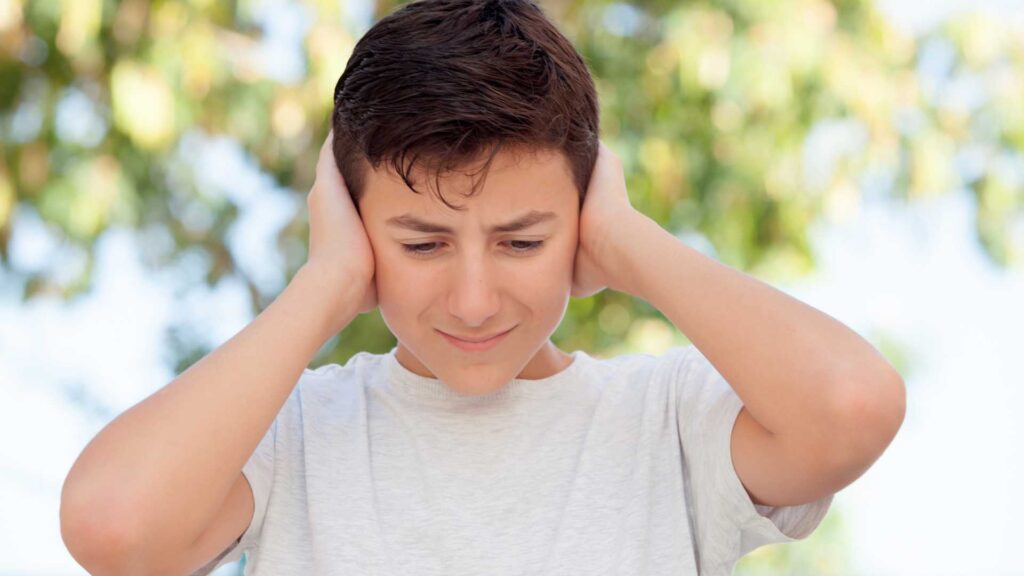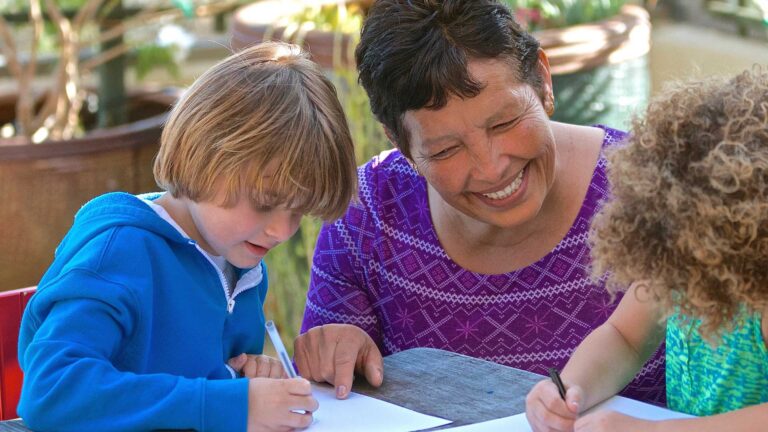Table of Contents
What are the similarities between autism and PTSD symptoms?
When we think of conditions such as autism and PTSD (post-traumatic stress disorder), we might see them as entirely different disorders. However, sometimes their symptoms intersect, which can lead to confusion for both those affected and the professionals trying to diagnose them. It is vital to understand not only the differences but also the similarities between these two disorders, as this can make a difference in the treatment and support people receive. Both disorders profoundly affect the way an individual experiences the world but for very different reasons.
It is essential to note that individuals with autism spectrum disorder (ASD) may be more likely to experience some trauma throughout their lives and thus develop PTSD. However, autism is a developmental disorder that a person is born with, affecting their behavior, communication, interaction with society, stimulus processing, and motor development. On the other hand, PTSD is a mental health condition that an individual develops after living through or witnessing a traumatic event. So, what are the similarities between autism and PTSD symptoms?
In this Texas ABA Centers blog, we will explore the complexities of autism and PTSD and how to navigate the diagnosis and treatment process when autism and PTSD overlap.
Autism and PTSD: Understanding Both Disorders

Individuals with autism often have atypical brain development that affects communication, behavior, and social interaction. They may experience difficulty communicating, carrying on conversations, or understanding nonverbal language. They may also exhibit repetitive behaviors and cope with sensory sensitivities, such as an aversion to specific sounds or textures. Each person on the autism spectrum is unique, and while some exhibit more visible symptoms, others may go unnoticed.
On the other hand, PTSD is a mental health disorder that arises after living a traumatic experience like an accident, abuse, or disaster. Individuals with PTSD may develop symptoms such as flashbacks, intrusive thoughts, hypervigilance, and intense anxiety. In many cases, these individuals relive the trauma repeatedly, making it difficult to move forward in their daily lives.
According to the National Institute of Mental Health, anyone of any age, gender, or race can develop PTSD. People with the disorder may feel stressed or frightened, even when they are not in danger. According to the National PTSD Center, approximately 6% of the population worldwide will experience PTSD at some point in their lives. It is crucial to keep in mind that genetic factors may make some people more prone to develop PTSD, as well as certain aspects of the traumatic event.
Autism and Trauma: Why Neurodiverse People are More Prone to PTSD
Studies by Autism Research have found that 60% of people with autism have experienced PTSD at some point in their lives. According to this theory, those on the autism spectrum have a more active amygdala and more reactive and inflexible nervous systems, which hampers the ability to regulate emotions and a tendency to experience sensory overload. Likewise, neurodiverse individuals are more vulnerable and more prone to social victimization and marginalization.

For example, bullying and harassment are significant risks for children with ASD, and studies show that 63% of children on the spectrum have experienced bullying. In addition, social isolation, difficulty distinguishing between appropriate and inappropriate behavior, and challenges in communicating and reporting abuse can make them more vulnerable to predators.
Autism vs PTSD: Overlapping Symptoms

One of the reasons it can be complicated to distinguish between autism and PTSD is that both disorders share specific symptoms. Both people with autism and those with PTSD may experience sensory sensitivities. For example, loud noises can be overwhelming, generating intense emotional reactions.
Anxiety is another common symptom, and both autism and PTSD can cause exacerbated emotional responses. People with either disorder may avoid situations they perceive as stressful or threatening, often leading to avoidant behavior and social isolation. In addition, difficulty regulating emotions is a recurring theme in both cases, which can lead to frustration and increased emotional vulnerability.
These are some of the most common overlapping symptoms:
- Social interaction difficulty
- Increased risk of victimization
- Dissociation
- Lack of self-confidence
- Experiencing depression and anxiety
- Self-harm behaviors
- Hypervigilance and overreactions
- Sensory overloads
- Difficulty managing intense emotions
- Impulsivity
- Executive functioning difficulties
- Insomnia
- Repetitive behaviors or stimming
Autism vs PTSD: Key Differences
Despite the similarities, there are also critical differences between autism and PTSD. Autism is a developmental condition that is present from infancy. It is something that people with autism have experienced their entire lives, affecting how they interact with the world from an early age. In contrast, PTSD develops as a result of a specific trauma, so PTSD symptoms appear after this event.
In terms of communication, people with autism may have difficulty understanding figurative language or social cues, whereas in PTSD, communication avoidance may be due to the need to avoid remembering the trauma. In terms of behaviors, people with autism may exhibit repetitive behaviors or engage in rigid routines as a way of regulating themselves. In contrast, individuals with PTSD often experience hypervigilance and are on constant alert for possible threats, which may lead them to exhibit repetitive behaviors or certain routines.
How Does PTSD Looks Like in Children with Autism?
PTSD is complex to diagnose in children with autism because of the overlapping symptoms. However, PTSD is diagnosed based on behavioral changes after experiencing the traumatic event. Some children who experience trauma at a young age may suffer from additional challenges as it is difficult for parents to know if their behavior has changed. In addition, signs of autism may also emerge at an early age, complicating the diagnostic process.

According to the DSM-5, here are some signs of autism and PTSD:
- Regression: Loss of verbal, social, or motor skills that the child previously mastered.
- Worsening sensory problems: Some children with ASD are hypersensitive or hyposensitive to stimuli. However, when ASD and PTSD occur at the same time, individuals are often more prone to sensory overload and startle more easily.
- Avoidance: It is common for some children with autism to dislike physical contact. However, you should be alert if you notice that your child used to like physical affection and no longer does.
- Physical discomfort: Some children with autism have difficulty expressing their emotional state and may resort to complaining of physical pain when they experience increased levels of stress and anxiety.
- Changes in stimming: Stimming is a normal behavior for people with autism to autoregulate, so watch for increased stimming, as it may be a sign of being worried. New stimming behaviors, such as self-injurious behaviors, may also appear.
To diagnose autism and PTSD, the individual must go through a completely different set of tests. For autism, children participate in specific tests in which behavioral, psychological, and developmental specialists observe behavior. On the other hand, individuals with PTSD participate in an evaluation with a mental health professional who reviews symptoms, medical history, and history of the traumatic event.
Treatment Options for Concurrent Autism and PTSD
Treatment for a person with autism and PTSD should be individualized and consider both their sensory sensitivities and communication difficulties. For autism, ABA (Applied Behavior Analysis) therapy is effective in working on communication and behavioral skills. For PTSD, trauma-focused cognitive behavioral therapy (CBT) is a common approach that can help people process trauma and manage symptoms.

Treatment plans must address both conditions in an integrated manner, and in some cases, medications can be helpful in managing the anxiety and depression that accompany these disorders. A trauma-informed approach that considers a person’s sensitivities can make a big difference in the recovery process.
Begin ABA Therapy with Texas ABA Centers
When comparing autism vs PTSD, we must understand that both conditions, although different in their origin and repercussions, have overlapping symptoms that can lead to a misdiagnosis. Autism and PTSD require personalized understanding and support.
Autism and trauma affect people’s lives in profound and complex ways. As a community, we must ensure an environment where each person can find the tools and support to overcome difficulties and thrive.
At Texas ABA Centers, we are dedicated to autism care services. We understand the needs of each client and provide personalized care considering any type of co-occurring condition.
Our ABA therapy ensures that each person on the spectrum receives professional, individualized attention and the support they truly need. Whether it’s improving communication and interaction skills, learning alternative coping mechanisms to deal with stress, or minimizing challenging behaviors, ABA therapy is the gateway to a path of empowerment and growth.
Start providing the support your loved one with autism needs now. Call us at (877) 771-5725 or schedule a free consultation in the contact section of our website.









